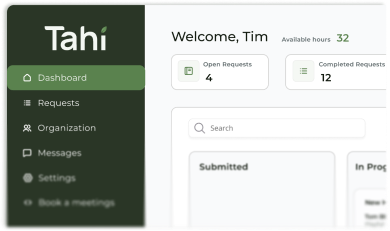Design System
A design system is a centralised library of reusable components, styles, and guidelines that ensures brand consistency and accelerates the design and development process.
What is a design system and why is it more than just a style guide?
A design system is the single source of truth for your brand's entire digital experience. While a style guide might tell you which colours and fonts to use, a design system is a living library of reusable components and clear standards that guide how your products are designed and built. It's a comprehensive rulebook that covers everything from the smallest design token like a colour hex code to complex components like a navigation bar.
Think of it as a set of building blocks for your website. Instead of designing a button from scratch every time, you pull the official 'primary button' from the system. This ensures that every button on your site looks and behaves exactly the same, creating a seamless and predictable user experience. It brings design and development together, ensuring everyone is working from the same playbook.
How does creating a design system in Figma benefit a Webflow project?
Building a robust design system in Figma before touching Webflow is one of the smartest investments you can make. Figma allows us to visually define and test every component, from typography scales to interactive elements. This means we can perfect the user interface and overall aesthetic in a flexible environment, getting full agreement from all stakeholders before a single line of code or a single Webflow element is built.
This detailed blueprint translates almost perfectly into Webflow through our Figma to Webflow handoff process. The components, spacing rules, and styles defined in Figma can be recreated systematically in Webflow using component-based design principles, creating a clean and organised project structure. This deep integration between the design phase and the development phase drastically reduces inconsistencies, speeds up the build process, and makes future updates significantly more efficient.
Can a design system help my business scale its digital presence effectively?
Absolutely. In fact, scaling is where a design system truly shows its power. As your business grows, you'll inevitably need to add new pages, features, or even entire new products. Without a design system, each new addition risks becoming a unique project, leading to brand inconsistency, duplicated effort, and a disjointed user experience. Your website slowly drifts away from its original polished state.
A design system acts as a strong foundation that supports this growth. When you need a new landing page, your team can assemble it using pre-approved, pre-built components, knowing it will be perfectly on-brand and functionally sound. This allows you to launch new initiatives faster, maintain quality across your entire digital ecosystem, and onboard new team members or partners with ease because the rules are already established.
What are the main components of a comprehensive design system?
A great design system is organised and thorough. It typically starts with the foundational elements, often called design tokens. These include your official colour palette, typography rules (like font sizes and weights for headings and paragraphs), spacing guidelines, and your library of icons. These are the basic atoms of your design language.
Building on that foundation, you have the component library. This is the collection of reusable UI elements, often created as a comprehensive UI kit. It includes simple items like buttons, input fields, and tags. It also includes more complex organisms like forms, cards, and navigation headers. Each component has defined states, such as hover, active, and disabled, ensuring consistent behaviour across the entire website.
How does Tahi Studio use design systems to deliver long-term value?
At Tahi Studio, we see a design system not as a one-off project, but as the core of a lasting partnership. We build your design system in Figma and implement it flawlessly in Webflow, creating a powerful and scalable foundation for your brand. This initial setup ensures quality and consistency from day one.
Our subscription model is perfectly suited to help you maintain and evolve this system over time. As your business needs change, we can add new components or refine existing ones, ensuring your design system grows with you. This approach provides continuous value, keeping your digital presence sharp, consistent, and effective, all managed through our transparent client dashboard.







